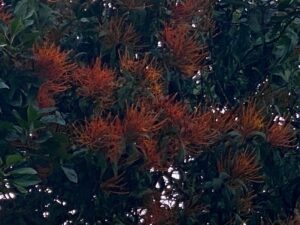Cuscuta jalapensis

Ditch the Seeds: The Fascinating Parasitic Propagation of Cuscuta jalapensis
Forget everything you thought you knew about starting a garden, because Cuscuta jalapensis, also known as the yellow dodder, doesn’t play by the rules. This plant throws traditional seed-sowing out the window and instead, embraces a life of fascinating parasitism.
Rather than sprouting roots and photosynthesizing like a typical plant, Cuscuta jalapensis survives by latching onto a host plant and siphoning away its hard-earned nutrients. This might sound a little ruthless, but this parasitic relationship is a marvel of nature and understanding its propagation methods offers a glimpse into the strange and wonderful world of botanical survival.
A Life Less Ordinary: No Roots, No Problem
Cuscuta jalapensis begins life as a seemingly innocuous seed, but instead of rooting in the ground, it sends out slender, leafless stems in search of a suitable host. This searching can take several weeks and the seedling relies on its limited internal food reserves, making this a critical period in its lifecycle.
Once a suitable host is found – often a plant with a robust stem – the real magic happens. The dodder twines tightly around its chosen victim and develops specialized structures called "haustoria." These haustoria penetrate the host’s tissue and tap into its vascular system, essentially plugging the dodder into a readily available food source.
Thriving on Theft: Dodder’s Growth and Reproduction
Freed from the constraints of photosynthesis, Cuscuta jalapensis explodes with growth, its yellow-orange stems rapidly enveloping the host plant. Flowers soon follow, clusters of small, white to cream-colored blooms that produce tiny seeds. These seeds are dispersed, often by animals or wind, ready to start the parasitic cycle anew.
A Plant of Controversy
It’s easy to paint Cuscuta jalapensis as a villain, a botanical vampire draining the life from innocent plants. While it’s true that heavy infestations can weaken and even kill their host, it’s important to remember that parasitism is simply another strategy for survival in the natural world.
Furthermore, the dodder’s parasitic lifestyle makes it a fascinating subject for scientific research. Scientists are studying the plant’s haustoria to learn more about plant-to-plant communication and the transfer of nutrients. This research could have significant implications for agriculture, potentially leading to new methods for controlling parasitic plants that negatively impact crops.
Witness the Wonder
While you might not want to cultivate Cuscuta jalapensis in your own backyard, its unique propagation method is undeniably intriguing. If you ever encounter this botanical curiosity in the wild, take a moment to appreciate its unusual life cycle – a testament to the diverse and often surprising world of plants.